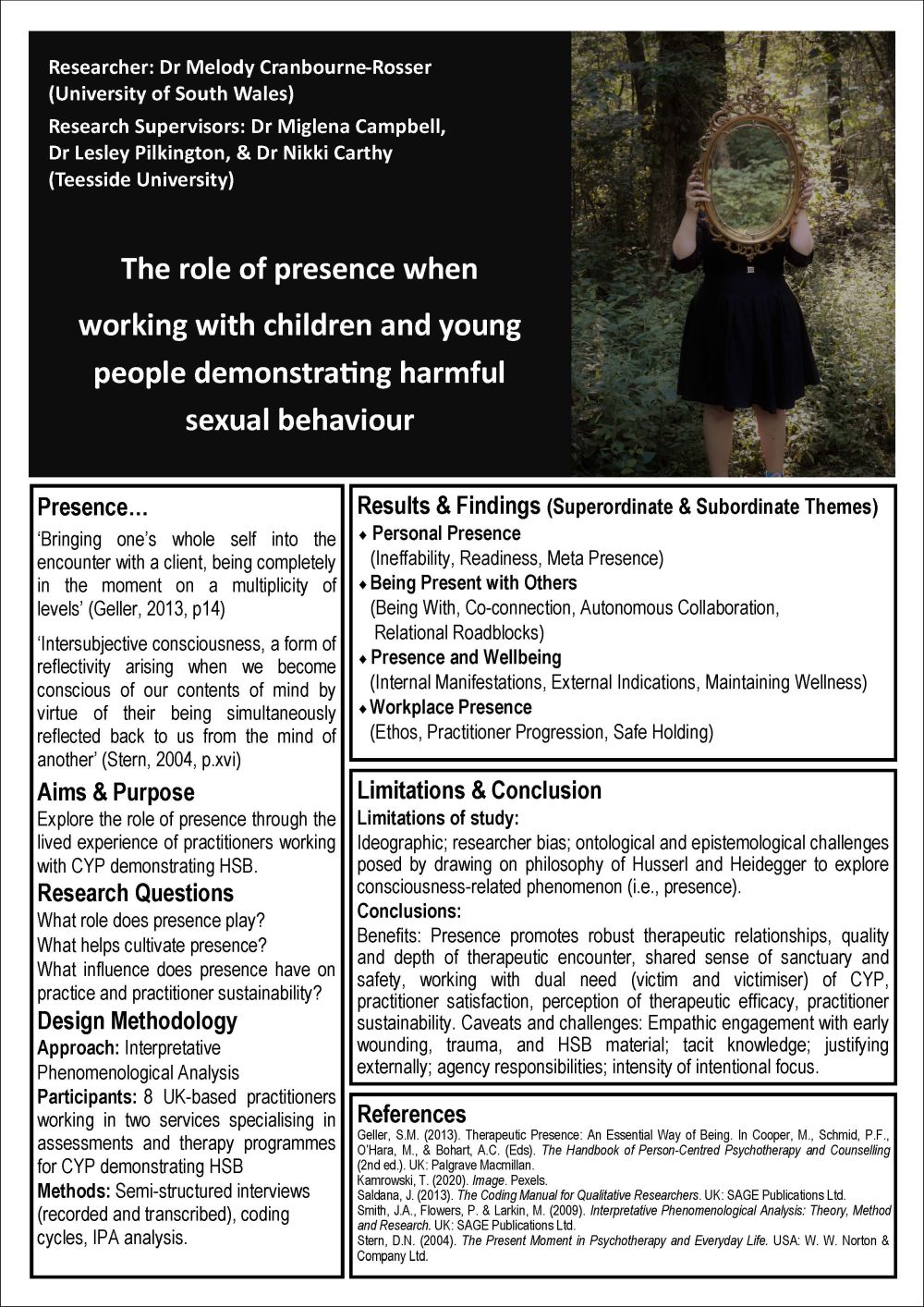
Aims or purpose
To explore the role of 'presence' for practitioners working with CYP demonstrating HSB, focusing on the following research questions: What is the role of presence? What helps practitioners cultivate presence? What influence does presence have on practice and practitioner sustainability?
Design and methodology
Drawing on the qualitative approach of IPA, an ideographic understanding of presence was gained by recruiting eight participants: purposively selected due to their primary employment being based within specialist services for a minimum of one year and completing their core professional training at least two years prior to participating. Data were collected via semi-structured interviews (audio recorded and transcribed verbatim) and analysed through coding cycles and the identification and exploration of emerging themes.
Ethical approval
University ethics board.
Results and findings
Four superordinate and thirteen related subordinate themes transpired from the data:
- Personal Presence (Ineffability, Readiness, Meta Presence)
- Being Present with Others (Being With, Co-connection, Autonomous Collaboration, Relational Roadblocks)
- Presence and Wellbeing (Internal Manifestations, External Indications, Maintaining Wellbeing)
- Workplace Presence (Ethos, Practitioner Progression, Safe Holding)
which enabled the researcher to respond directly to the research questions, plus make future recommendations.
Research limitation
Small sample size, therefore, results not considered representative of the wider population. However, IPA is ideal for gleaning an ideographic perspective of a small, diligently selected population, as opposed to large sample sizes and generating wide-reaching statements. The intention was to capture a rich and deep understanding of participants’ lived experiences rather than aim for generalisability and transferability.
Potential researcher bias due to working within the field. Steps taken included: utilising supervision, across-discipline literature, across-transcript analysis sheets, extracts from all participants, plus participants viewing transcripts and regularly returning to data.
Ontological and epistemological challenges posed by utilising the philosophy of Husserl and Heidegger to explore consciousness-related phenomenon (i.e., presence) from both a descriptive and interpretative stance, addressed by drawing on contemporary literature to inform the study.
Conclusions and implications
Presence plays a significant role when working with CYP demonstrating HSB in terms of the therapeutic relationship, perceived efficacy, satisfaction, sanctuary, safety, readiness to practice, wellbeing, service-level support and ethos. However, presence has been overlooked with this client group and recommendations were made regarding future direction and development.
Views expressed in this article are the views of the writer and not necessarily the views of BACP. Publication does not imply endorsement of the writer’s views. Reasonable care has been taken to avoid errors but no liability will be accepted for any errors that may occur.
